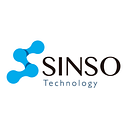DataLand ^ ChatGPT: To Start a New AI-oriented Social Paradigm (2)
According to recent news, the CTO of Microsoft Germany revealed that GPT-4, which will offer a multimodal model, will be published the following week. With GPT-4, AI can generate text, images, and even video, while the old version of ChatGPT can only generate text. It is foreseeable that a booming of AI learning will be sparked by the unexpectedly early release of GPT-4 for the entire society.
SINSO DataLand is having a grand plan to fully integrate with ChatGPT. With the accelerated launch of GPT-4, SINSO Getway distributed cache network will fully support SINSO DataLand to prop the storage of AIGC. First off, it has been possible for DataLand to collect and store interactive content, including input and output text, pictures, videos, and sounds. We’ll also investigate the possibility of storing user-specific targeted datasets through chatbots. Considering GPT-4’s comprehensive ability is expected to be 10 times more than that of GPT-3.5, the introduction of GPT-4 will substantially improve the way people interact with computers. With a greater learning capacity, GPT-4 may even be qualified for psychological counseling.
The closer collaboration between ChatGPT and humans requires distinct digital identities (DID) for persons. When the DIDs are also clear to the AI side, the two parties can communicate credibly. We must give AI access to personal data assets for permissionless use and employ AI to assist users in discovering more valuable resources. To help people better grasp how to utilize technology, we directly leverage AI to create a bridge between humans and machines. ChatGPT is not only a supporting creator but can also fortify the human-centered copyright and develop the creator’s economic map with the aid of DataLand.
The economic space built by Web3.0 has bridged geographical boundaries, promoted collaboration between the upper, middle, and lower levels of the industrial chain, and dismantled the traditional organizational structure. Through interoperable digital identities and digital assets, Web3.0 creates an open economic environment that enables users, assets, and data from various economies to flow with one another, encouraging the ongoing invention of business models and creating a broader market and economic ecosystem. In the case when AI can facilitate human creation through its powerful learning, inductive, and summarizing capabilities, it can be said the Web 3.0 economy has increased the amount of high-quality content available to AI, which will have a snowball effect as more AI is utilized, the more “smart” it will become.
The combination of DataLand and ChatGPT is actively promoting such fascinating scenarios produced by the interaction between Web3.0 and AI.
To be continued…
